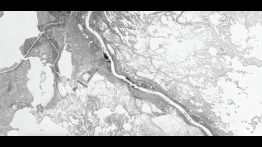Remote Sensing in Visual Journalism
Wednesday, November 15, 2023, 6 - 7:30pm

One way to track the rapid growth of earth observation is to check the news. Pick up any story about climate change or a natural disaster and you’ll likely find a satellite image. But journalists love to ask—what other stories might we uncover using this technology? In truth, we’ve only begun to scratch the surface of what is possible. Tim Wallace, Ph.D., of The New York Times gives a tour of the past, present and future of sensor journalism.
Tim Wallace is a senior editor for geography at The New York Times. He makes visual stories with information gathered from land, sky and space. He has a Ph.D. in geography from the University of Wisconsin-Madison.
RSVP requested.
The free event will be held in Cooper's Civics Projects Lab (enter between E. 6th and E. 7th Streets). A symposium and reception follow the talk.
Located at 41 Cooper Square, on Third Avenue between 6th and 7th Streets.




